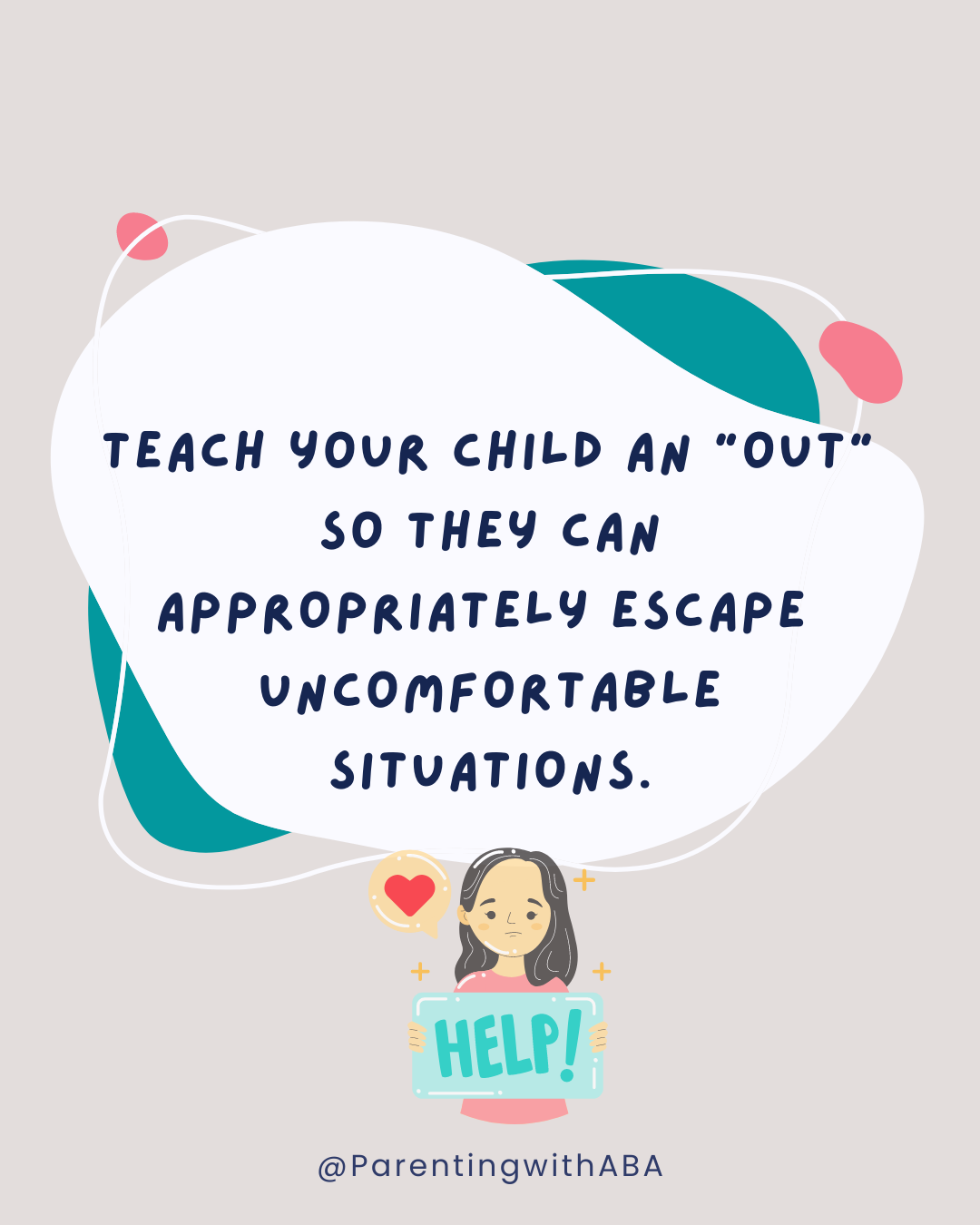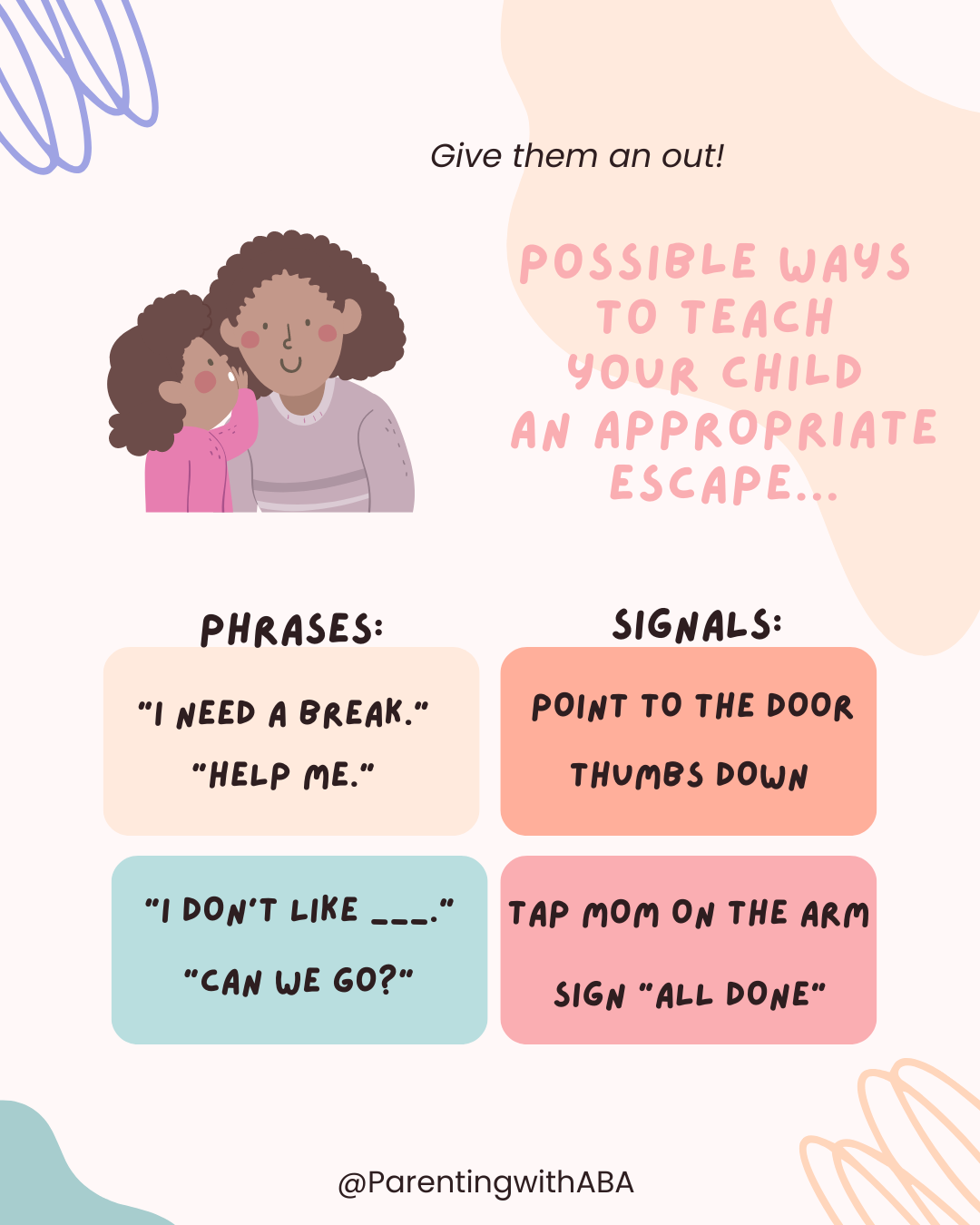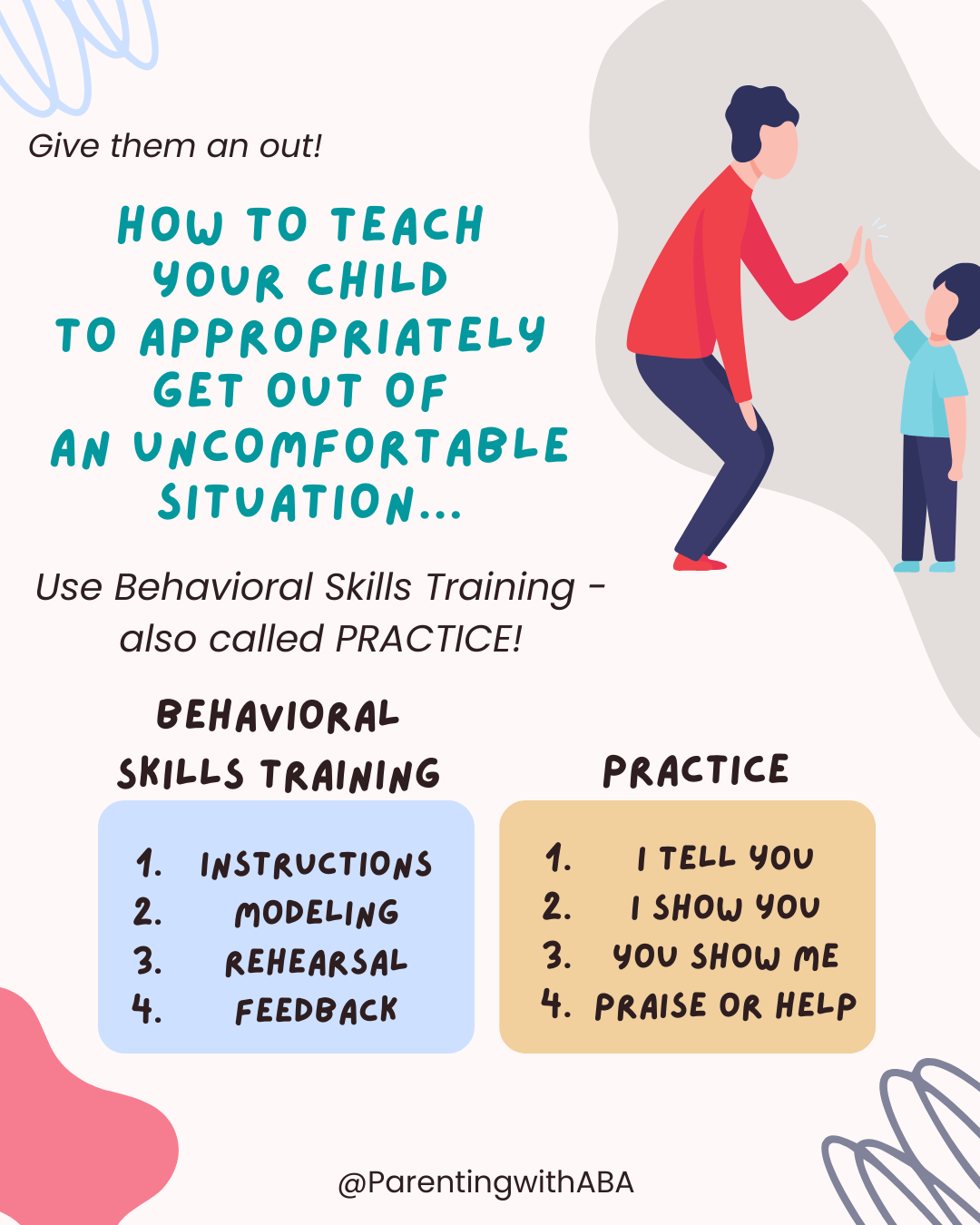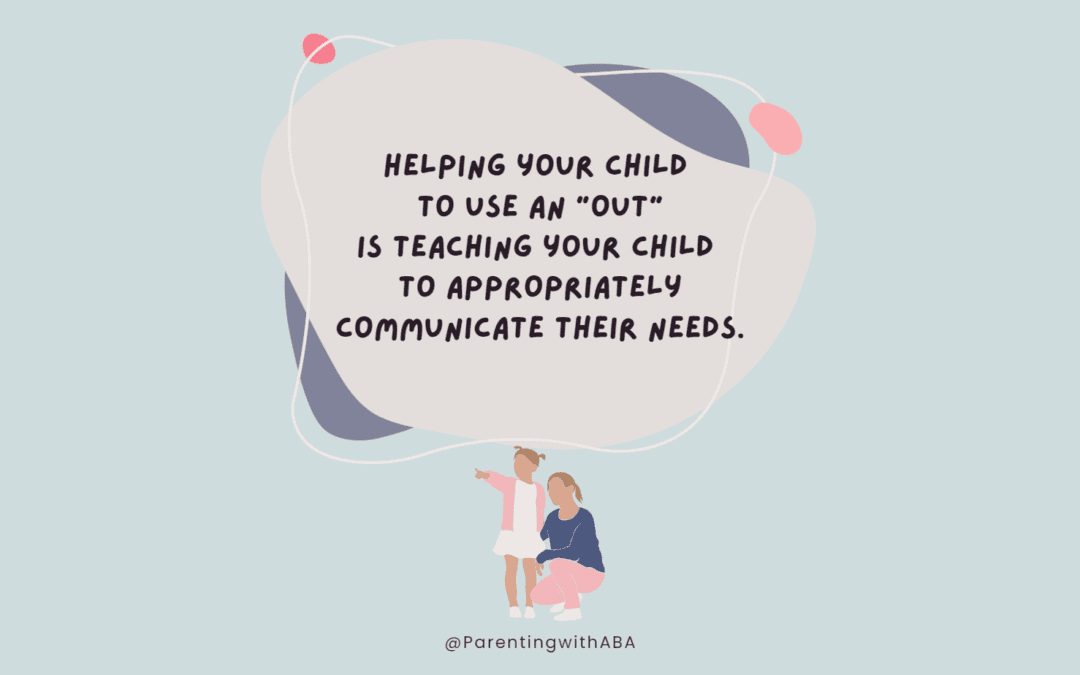When you find yourself in a conversation you don’t want to be in, what do you do? You either stay in it or find an excuse to get the heck out of there! Maybe you pretend to get a text or phone call. Perhaps you excuse yourself to the restroom. You might find a polite way (even though not always 100% truthful) to extricate yourself from the situation. You give yourself an “out”!
You know how to escape or avoid less than awesome situations without needing to resort to problem behavior and causing a scene. Does your child know how to do that?

What are some ways kids can typically show they need an “out” that are less than awesome? You may have seen your child (or someone else’s) do things like whine and complain until they are removed from a situation, yell or raise their voice so the parent feels they need to remove the child from bothering others in the area, or resort to physical actions like hitting or kicking. Do any of those sound like what you’d like to see -especially when taking on new or exciting events or outings that you are looking forward to over the holidays?
All humans engage in some sort of behavior to escape an uncomfortable situation. We look at our phones, excuse ourselves from the room, make excuses to not even attend. Our kids also engage in some sort of behavior to escape situations that are uncomfortable TO THEM. What is uncomfortable to them? That’s your child’s opinion. As their parent, you can probably predict settings or circumstances that your child will deem uncomfortable: too loud, too crowded, have to sit still and quiet, boring, later than their bedtime, etc. So what can we do about this?
Teach your child the “out”. How can they get a breather or completely escape a situation that is uncomfortable to them? I wish there was a magic answer to that. The truth is that the out probably will look different from one situation and scenario to the next.

Without knowing HOW to escape an uncomfortable situation, kids are going to engage in inappropriate behavior to get out of or be done with something. We can give them an “out”!
Here are some possible ways your child can appropriately escape an uncomfortable situation:
- “I need a break”
- “Will you help me?”
- “I’m not okay”
- “This is not okay with me”
- “I don’t like ____”
- “Can we go outside?”
- “Can we go home?”
You can also come up with a signal between the two of you so your child doesn’t even have to use words:
-
-
- Point to the door
- Thumbs down
- Tap mom on the arm 3 times
- Tap your watch
- Sign “all done” (palms facing in, then turn hands so palms face out)
-
So HOW do you teach this new “out” to your child? à Behavior Skills Training- aka- practice! Here’s some info about practice from a previous post of mine…
You’ll be using a behavior tool called Behavior Skills Training that is backed by a TON of research- so why wouldn’t it work in your home? But you don’t need to use that long name. We just call it practice.
Read this in Ted Lasso’s voice (or any other parody of the 2002 press conference): “Practice? I’m talking about practice! We’re talking about PRACTICE!”
Behavior Skills Training is defined as these 4 steps in order:
- Instructions
- Modeling
- Rehearsal
- Feedback
Practice looks like this:
- I tell you.
- I show you the kid part.
- You show me the kid part.
- I give you praise or help.
Specifically practice the behavior or sentence that will help your child get a break or temporary, brief, or even permanent escape. Then when they do it appropriately in real time- honor it.

We can give our kids an “out” by teaching them appropriate ways to communicate that they need a break or are all done with a given situation. I understand it’s not fun to step outside with your child during a dinner party. You want to be inside visiting with friends or family. But taking 5 minutes to give them a break every once in a while might mean your whole family stays longer than usual and gets more time having fun in the long run. Doing the less fun thing of helping your child with their “out” means that while it’s not your favorite thing in the moment, it’s teaching your child how to communicate their wants and needs more appropriately which is going to make a HUGE difference for them in the big picture.
You know how to get out of uncomfortable situations. Does your child? Help them out!

Recent Comments